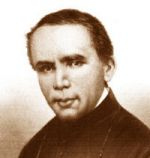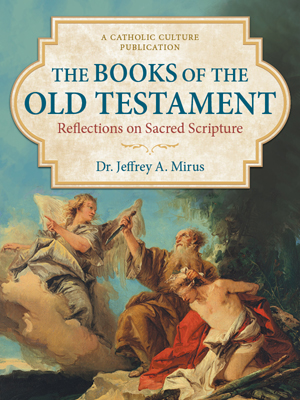The Age of Patrology
by Sal Ciresi
Church History testifies that the science of Theology is composed of many subjects: a few examples are Mariology (the study of Our Lady), Sacramental Theology (the study of the Sacraments), and Apologetics (the defense of the Faith). One subject, integral to Catholicism, is the study of the Fathers of the Church — better known as Patrology.
The study of the Church Fathers includes their lives, writings, and teachings taken from the first eight centuries of the Catholic Church. Chronologically, the Fathers originated during the New Testament age, and terminated A.D. 749. Normally, dates from the Patristic age are approximations.
Patrology, from a linguistic standpoint, is related to the Latin word pater (English: father). The concept behind this word has deep Biblical roots; discovered in both Testaments (cf. Judg. 17:10-13; Prov. 4:1-2; Acts 7:1-53; 1 Cor. 4:15). The idea conveyed in these Scriptural texts is the "deposit of faith," handed down from generation to generation, via "teachers" (Fathers). This is the great legacy of the Fathers: as teachers, they helped preserve Catholic Tradition.
What distinguished the Fathers from the other members of the Catholic Church? Four attributes (or characteristics) set apart the Fathers: (1) orthodoxy, (2) sanctity, (3) antiquity, and (4) Church approbation. Orthodoxy refers to the correct doctrinal beliefs of the Fathers. Sanctity is a reflection of their personal holiness. Antiquity, mentioned already, covers the time period from the Apostolic age to A.D. 749. Church approbation was the official recognition that the particular Father had met all the other attributes (orthodoxy, sanctity, and antiquity).
On occasion, certain Fathers didn't possess the four attributes just mentioned. These kinds of Fathers were usually known as Ecclesiastical writers — this includes Tertullian (died A.D. 223), Origen (d. A.D. 254), and Eusebius of Caesarea (d. A.D. 340).
Explicating a previous point, there is a demarcation for the end of the Patristic age; based on geography. The age of the Eastern Fathers ended with the death of St. John Damascene (d. A.D. 749). The Western Fathers closed with the passing of St. Isidore of Seville (d. A.D. 636). Some Patristic scholars close the West epoch even earlier; with the expiration of Pope St. Gregory the Great (d. A.D. 604). East and West refers to the surrounding geographical area, around the Mediterranean Basin, based on the Roman Empire.
Another means to classify the Church Fathers, in addition to East or West, is by the labels Greek (East) and Latin (West). These languages refer to the tongues into which the Patristic works were written. Noteworthy is the fact that some Fathers wrote in other languages such as Syrian, Coptic, Armenian, Georgian, and Ethiopian. For this reason, the designations East/West or Greek/Latin should never be taken too literally.
Who are some of the Fathers? The East can boast of St. Ignatius of Antioch (d. A.D. 107); St. Justin Martyr (d. A.D. 165); St. Clement of Alexandria (d. A.D. 215); St. Athanasius (d. A.D. 373); St. Basil the Great (d. A.D. 379); St. Gregory of Nazianzus (d. A.D. 390); St. Gregory of Nyssa (d. A.D. 395); St. Epiphanius (d. A.D. 403); St. John Chrysostom (d. A.D. 407); and St. Cyril of Alexandria (d. A.D. 444). Many others can be mentioned.
The West can claim St. Irenaeus (d. A.D. 200); St. Cyprian (d. A.D. 258); St. Hilary (d. A.D. 368); St. Ambrose (d. A.D. 397); St. Augustine (d. A.D. 430); St. Jerome (d. A.D. 420); St. Peter Chrysologus (d. A.D. 450); St. Vincent of Lerins (d. 450); Pope St. Leo the Great (d. A.D. 461); and St. Benedict (d. A.D. 546). This list can certainly be extended.
How does the Magisterium of the Catholic Church treat the Patristic heritage? The Catechism of the Catholic Church (1997) highlights the importance of the Fathers in several paragraphs (Nos. 8; 11; 78; 688). The Catechism reinforces these paragraphs by containing copious Patristic references throughout the text of the Catechism.
Today's Catholic would profit by following the lead of Holy Mother Church and studying Patrology. This study will be time well spent, covering one of the most crucial epochs in Church History: the Fathers of the first eight centuries of Christianity.
Ciresi serves on the faculty of the Notre Dame Graduate School of Christendom College and is the Director of the St. Jerome Biblical Guild.
This article, slightly modified, appeared in the Arlington Catholic Herald on August 9, 2001.
This item 4380 digitally provided courtesy of CatholicCulture.org






